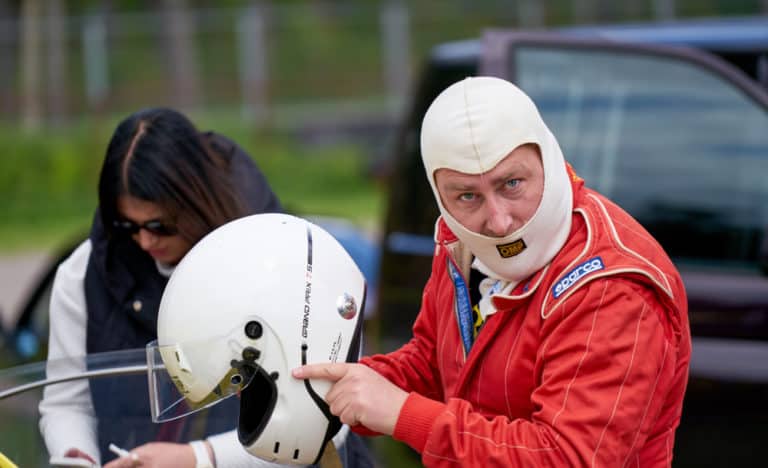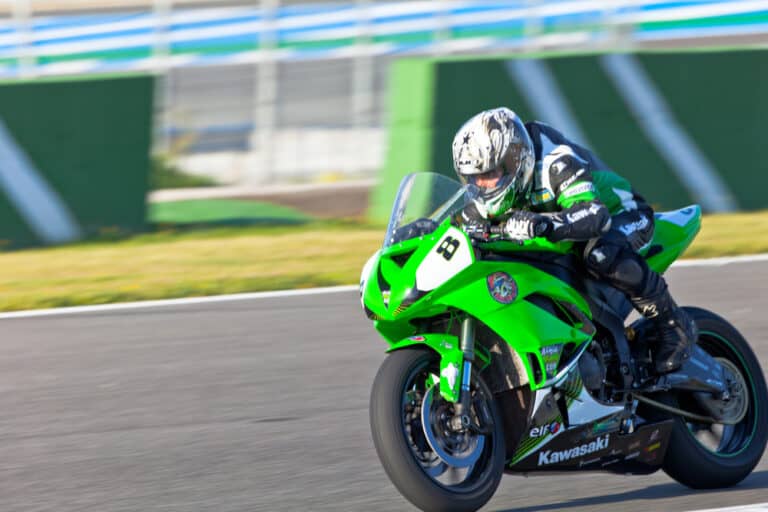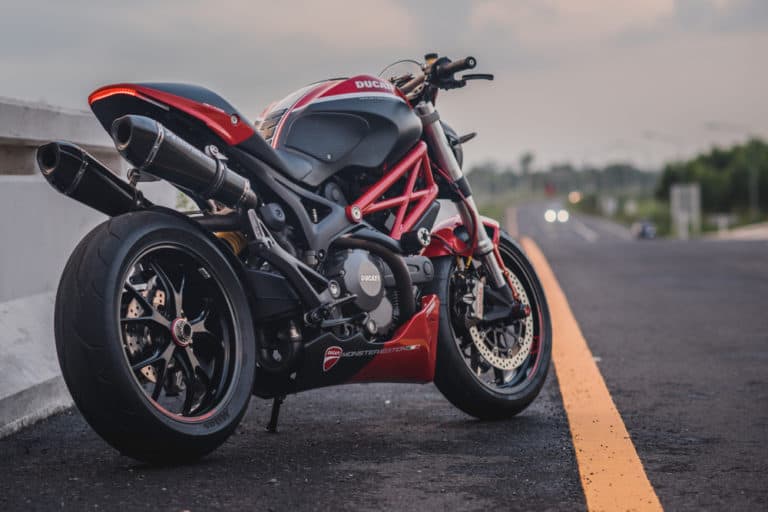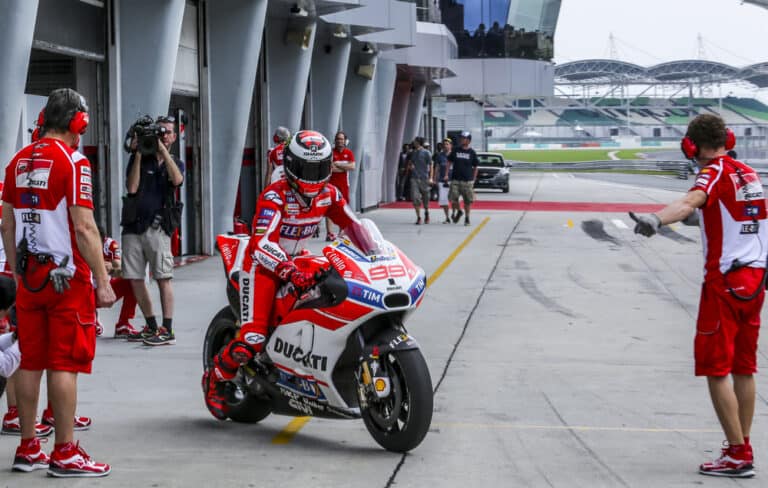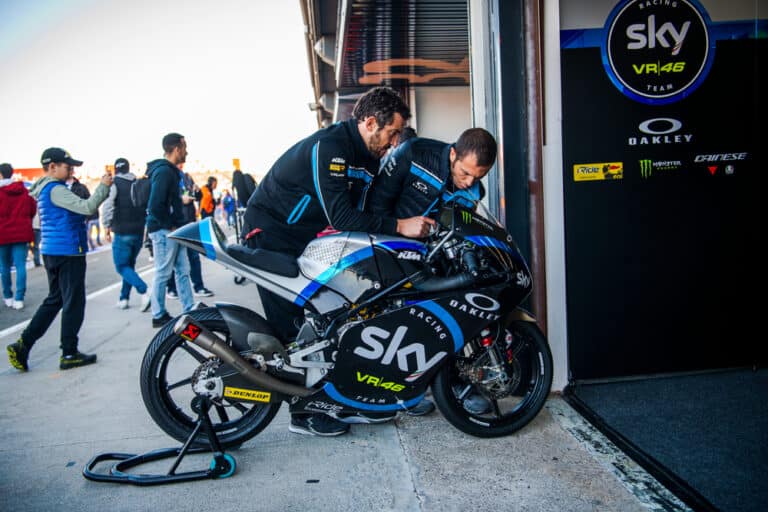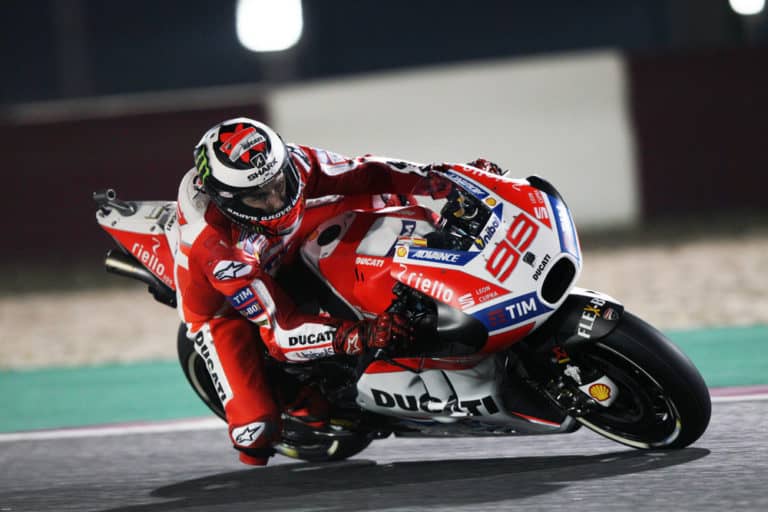Editorial credit: Ivan Garcia / Shutterstock.com
A popular question asked about MotoGP is usually about their highest speeds. Although the 217mph is very impressive, the most remarkable attribute about these speed machines is how they lean so much in the corners while riding at high speeds? So, how do MotoGP bikes lean so much, and how is this achieved?
A MotoGP bike can reach lean angles of 64° at the apex of a corner. The slick tires, the bike’s center of gravity, and the rider’s skills all play a part in reaching these high lean angles. The highest lean angle recorded on a MotoGP bike was 68° during a private practice session.
Read on to discover how far a MotoGP bike can lean, what assists them to lean that far, and the best lean technique.
How Much More Do MotoGP Bikes Lean Than Other Bikes?
The science involved with a MotoGP bike’s lean angle is the tires, the center of gravity, the bike’s lean angle potential, and the rider technique. All these added together will allow the rider and bike to reach lean angles in excess of 65°.
To put this high lean angle into perspective, let us look at other bike categories for a lean angle comparison. If we take the vertical at 0°, this would be when the rider and bike are at an upright position. The following will be the maximum lean angle of some bikes:
- A Scooter – 40°
- A Standard Naked Street Bike – 50°
- A Super Sport Bike – 55°
- An SBK Super Bike – 61°
- A MotoGP Bike – 64°+
Here is an illustration of how far the 65° lean angle is. A MotoGP bike was equipped with a stand that enabled it to stand at the max lean angle while stationary (64°). In this setup, the rider could not mount the bike without falling over. This is due to all the excess cornering forces at play to keep the rider firmly in position.
Why Is Maximum Lean Angle So Important?
The main reason the max lean angle is vitally important in MotoGP or any bike racing series is simple. It fundamentally unlocks the maximum cornering speed potential of the bike. The further the rider and bike lean over, the higher the cornering speed that can be reached. This will drastically improve lap times and will give an edge over the other riders.
But even the world champion riders do not reach the maximum lean angles every time, even at the same corner. The situation the bike is in and its speed will determine the maximum lean angle that can be reached.
How Do MotoGP Tires Assist In Reaching High Lean Angles?
The tires on a MotoGP bike play a fundamental role in reaching the bike’s maximum lean angle. The 120/70/ZR17 front and 180/55ZR17 rear tires are manufactured by Michelin that use a special ingredient called Carbon Black. These tires supply the maximum grip to the tarmac through a wide variety of lean angles.
At any given time, the contact patch that contacts the track surface is roughly the size of a credit card. As the bike leans over, the tire’s diameter gets smaller; this increases the bike’s speed without increasing RPMs. But the tire is not molded to 65°, so how can the bike lean to that extent? That is a closely guarded secret between the bike manufacturers and Michelin.
All we know is that the tire molds itself to the angle the bike is leaning. The tire’s pressure plays a significant role by supplying the perfect contact patch when the bike is leaned over at 65°. The tire must withstand 2000 newtons or 204kg of lateral force during the corners while maintaining the contact patch for the lean angle.
Does Lowering The Bike’s Center Of Gravity Increase Lean Angle?
Lowering the center of gravity on a MotoGP bike improves handling and can assist with the high lean angle around corners. If the center of gravity is lowered via the suspension (ride height), it is done in increments of millimeters (mm) at a time. But when the rider leans the bike over, it changes by a few inches, drastically improving the handling and increasing the lean angle.
If you notice that MotoGP bikes do not always stay straight up on the track straights, instead they do an “S” shape maneuver with a slight lean. This is so the shoulder of the tire, with its smaller diameter, contacts the track to improve acceleration on the straight while keeping the potential wheelie from happening under the hard acceleration. So the truth is “lean to go faster.”
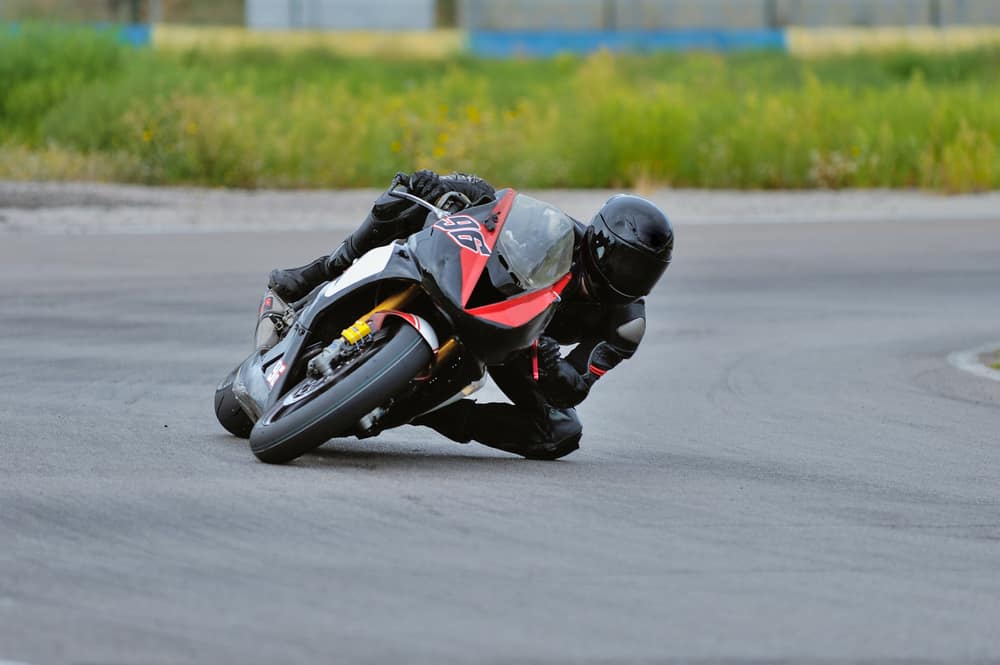
What Is the Highest Lean Angle A MotoGP Bike Can Reach?
The record for the highest recorded lean angle was achieved by Marc Márquez. He managed to lean his Honda to a staggering 68° during a private training session. The truth is that the maximum lean angle is determined by the hardware on the bike. At around 68°, the pegs on a MotoGP bike will start scraping the track surface. But the higher the speed into the corner will result in a higher lean angle that can be achieved.
MotoGP bikes already have very high ground clearance, which aids in leaning to a certain degree. Still, it comes down to the rider’s technique and ability.
The Correct Lean Technique
The internet is full of self-help guides on how to increase the lean angle during corners. But they will only help so much. The MotoGP riders are among the best riders in the world, and each one will have their own unique leaning technique. The riders will not reach the maximum lean every time in every corner. Still, they are willing to push the boundaries when needed to win.
A good leaning technique will depend on the bike and its setup. The riders will then need to find the limits of the setup through trial and error. The riders will see where they can increase the lean angle and when in the corners, they can reduce it. If there are camber differences in the corners or a high curb, it will all play into the rider’s technique.
Conclusion
MotoGP bikes can reach high angles of lean in the corners thanks to a combination of things. The tires need to grip the tarmac and deform enough in the corner to maintain the highest levels of grip. The riders lower the bike’s center of gravity by leaning, which improves acceleration. The rider’s technique is the final element that aids the MotoGP bike in reaching lean angles of up to 65°.
References
- https://www.youtube.com/watch?v=J73XRDGPcpE
- https://www.motogp.com/en/news/2013/09/26/the-lean-angle-experience/162596
- https://www.youtube.com/watch?v=uhz0KCMXtOw
- https://www.cycleworld.com/sport-rider/motogp-extreme-lean/

